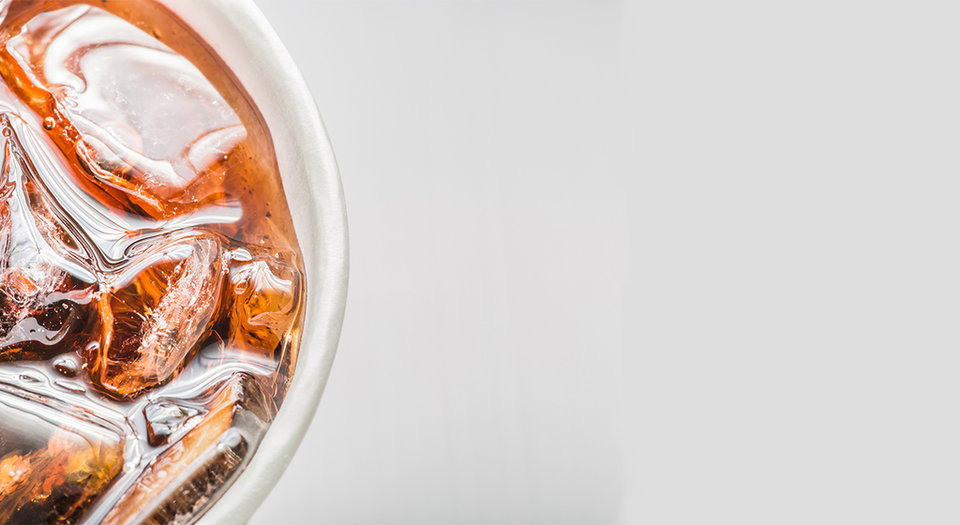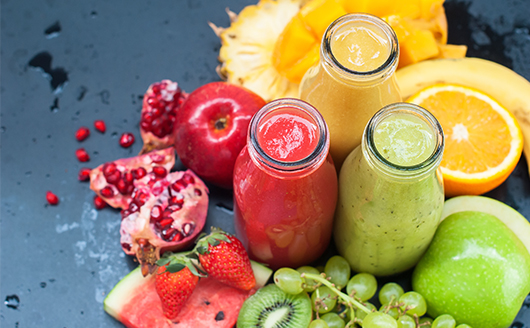Soft Drinks
The SNAP effect: soft drink manufacturers could face a ‘new blow’ following regulation revamp
Carbonated soft drink manufacturers are used to navigating choppy waters, especially in the US where sales have been declining since 2003. A proposed revamp of the Supplemental Nutrition Assistance Programme (SNAP), which provides foods and beverages to poor Americans, could end up delivering a new blow to soft drinks that the industry did not anticipate. GlobalData finds out more.
The Trump administration shocked the fast-moving consumer goods world in mid-February when it unveiled a controversial new SNAP revamp promised to cut the federal budget deficit by about $21bn over the next decade. The new plan seeks to replace some of the cash payments currently made via credits to electronic benefit transfer (EBT) cards with boxes of food and beverages to be provided on a regular basis via a distribution system, the details of which have yet to be revealed. The ‘American harvest box’ is expected to be filled with foods that are selected based on their nutritional value and economic benefits to US farmers. Shelf-stable milk, pasta, ready-to-eat cereals, peanut butter, beans, canned fruits, and vegetables are expected to make the harvest box cut. However, carbonated soft drinks are not.
Harvest boxes will be aimed at low-income Americans receiving at least $90 per month in SNAP benefits, a level that includes over 80% of current SNAP recipients. The SNAP programme has a huge footprint, with over 45 million Americans participating in the programme, though participant numbers tend to bounce around depending upon prevailing economic conditions. SNAP accounts for about 80% of the US Department of Agriculture's (USDA's) annual budget.
Food-makers and retailers appear to have been surprised by a proposal coming from an administration widely viewed as business-friendly. That is the way it played out on Wall Street, with shares of dollar stores like Dollar General and Dollar Tree dipping after the announcement. SNAP transactions are believed to make up around 5% of dollar store sales, according to Gordon Haskett Research Advisors, a business that could be lost in a SNAP revamp. Retail giant Walmart is also exposed as it alone is estimated to take in about one fifth of all SNAP spending, according to a recent CNBC report.
Soft drink manufacturers bear a unique degree of risk for any proposed revamp of SNAP. According to a November 2016 Nutritional Assistance Programme Report by the USDA that examined actual point-of-sale transaction data from 2011 from a ‘leading grocery retailer’ in the US, the number-one item purchased by SNAP households was soft drinks.
Soft drink manufacturers bear a unique degree of risk for any proposed revamp of SNAP.
For a programme that professes to provide ‘supplemental nutrition’, it is hard to justify why soft drinks should be at the top of the heap, especially in a climate that favours hiking taxes on soft drinks high in sugar content to shift purchase behaviour toward healthier options. Purchase data seems to indicate that SNAP recipients are especially heavy purchasers of soft drinks.
The top packaging configuration of soft drinks favoured by SNAP households was 12, 15, and 18-count multipacks, a package type conducive to pantry-loading and one that tends to be associated with heavy users. Occasional users of soft drinks are unlikely to be filling their pantries with packs this big.
Accounting for $357.7m in SNAP household expenditures in 2011, soft drinks alone tallied 5.4% of all SNAP household spending on packaged food and drink. The larger category of ‘sweetened drinks’, which combines soft drinks with other categories like fruit juices, energy drinks, and sweetened teas, totalled $608.7m in SNAP household spending in 2011. This represented 9.3% of all SNAP household spending on food and beverages, nearly $1 in every $10 spent. Upon hearing these numbers when they were first revealed in 2017, Marion Nestle – professor of nutrition, food studies, and public health at New York University – remarked to The New York Times that, ‘SNAP is a multibillion-dollar taxpayer subsidy of the soda industry.’
Soft drink companies would probably disagree with that harsh assessment, but they would also probably be the last to believe that the Trump administration (of all administrations) might be the one to throw cold water on soft drink purchases with SNAP money. Efforts to remove soft drinks from SNAP are nothing new and date back more than a decade: at least nine states, including Maine and Minnesota, have tried to restrict the purchase of sweetened beverages with SNAP money. States alone cannot make that call; only the USDA can, and the agency has thus far denied every official request to exclude soft drinks or other sweetened beverages from the programme.

Image courtesy of ruangrit junkong / Shutterstock
The USDA's own detailed research may have inadvertently revealed the demographic composition of the American soft drink industry's heaviest users. Indeed, soft drinks accounted for 5.4% of all SNAP household food and drink spending, versus 4% of similar spending for non-SNAP households. The larger category of sweetened beverages (including soft drinks) showed the same tendencies, accounting for 9.3% of SNAP household spending on food and drink versus 7.1% for non-SNAP households. The reverse was true for unsweetened beverages like spring water and non-dairy milk, which trend higher for non-SNAP households.
These details matter because the Trump administration (regardless of the seriousness of the ‘American harvest box’ proposal) may have teed up a debate on what types of food or drink really belong in the SNAP programme. This re-examination could prove costly for soft drinks as the precedent has already been set that a more restrictive stance toward sweetened drinks can shift consumer purchase behaviour.
In October of 2009, the Supplemental Nutrition Programme for Women, Infants and Children (which provides a direct subsidy for food and drink purchases of specific types of products to poor mothers) – better known as WIC – phased in a major restriction in juice purchases to try to produce better health outcomes. The new rules cut the permissible level of juice purchases by parents on behalf of kids aged one to four to 128 ounces per month, down from the prior level of 288 ounces. The rationale for the cut came from data showing that excessive consumption of 100% juice was associated with a range of negative health outcomes including increased risk of weight gain, dental carries, and reduced consumption of fibre.

Image courtesy of Olga Pink / Shutterstock
This cut of more than 50% created an ideal laboratory to study if a change in the rules would actually lead to a change in shopping and consumption behaviour. A Yale School of Public Health study on the effects of reduced juice allowances for WIC published in the peer-reviewed journal Pediatrics in April 2013 took an in-depth look at the before and after effects of the rule change. Examining scanner sales data from a New England supermarket chain, the study found that juice purchases through WIC declined by 23.5% after the reduced juice allowance was phased in. Juice purchases made with non-WIC funds (one easy workaround to the new WIC rules) did increase, but the 13.6% gain only partly compensated for the 23.5% decline in WIC juice purchases.
The WIC programme's success in steering consumers away from juice may embolden SNAP critics that have been trying for years to cut or eliminate soft drink purchases within the programme. Their efforts have fallen flat so far, partly because of lobbying efforts on behalf of the soft drink industry over time. According to the Center for Responsible Politics, PepsiCo was one of nine food processing and sales organisations that lobbied the US government to prevent restrictions on what may be purchased with SNAP money in 2012. Kraft Foods and Coca-Cola have also lobbied against restrictive legislation. If the Trump administration's proposed changes to SNAP generate the public debate that they deserve, everything pertaining to SNAP may be on the table, including purchases of carbonated soft drinks. That could lead to a whole new set of problems for soft drinks.